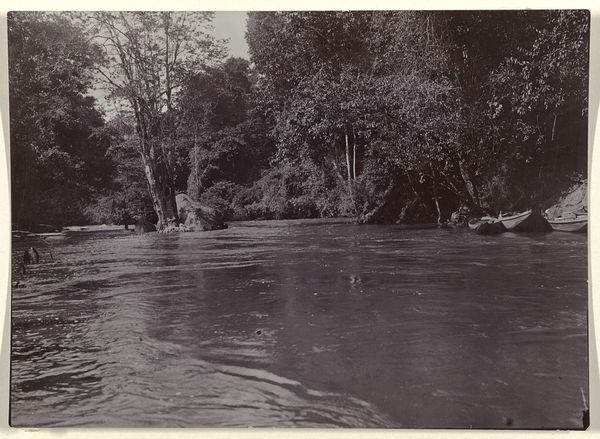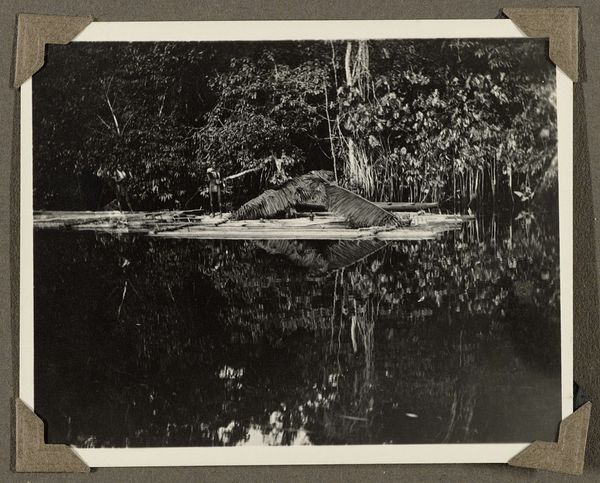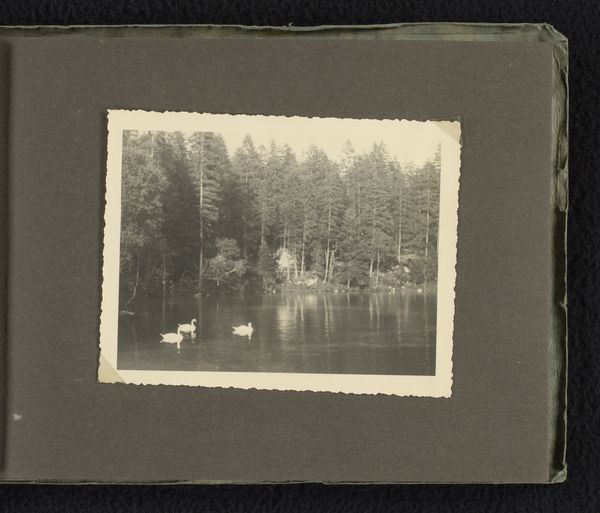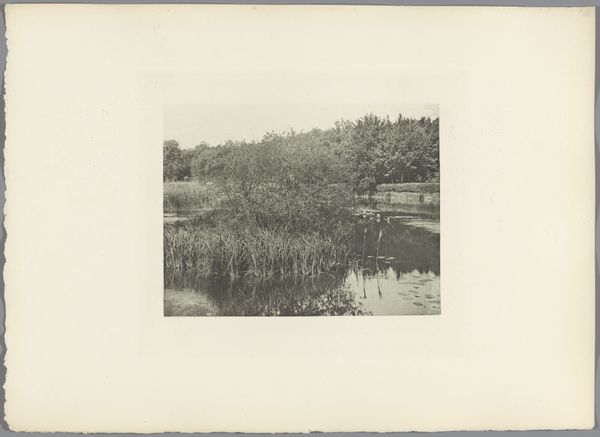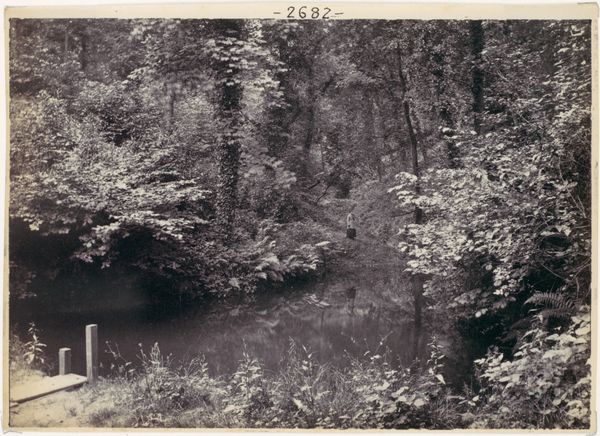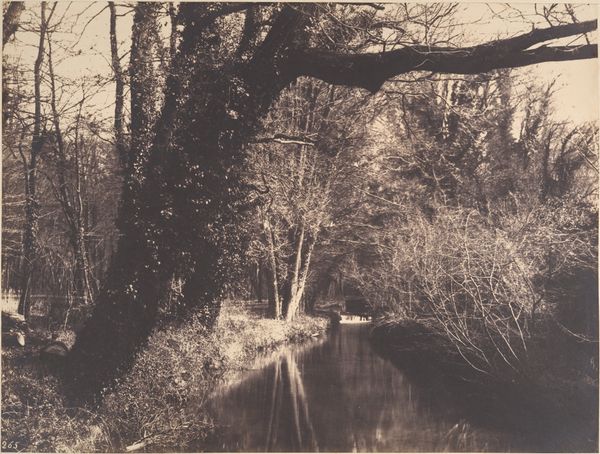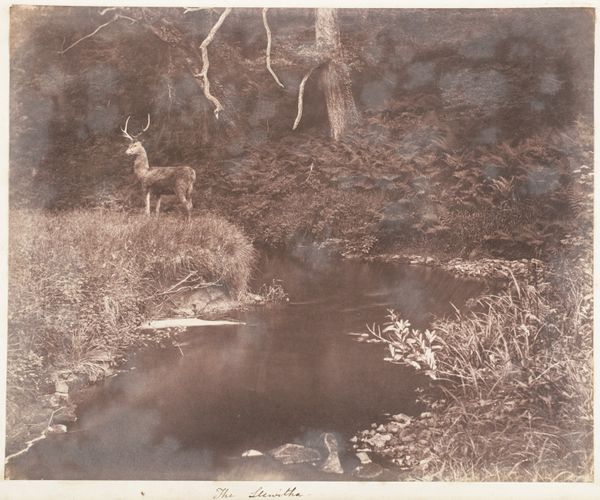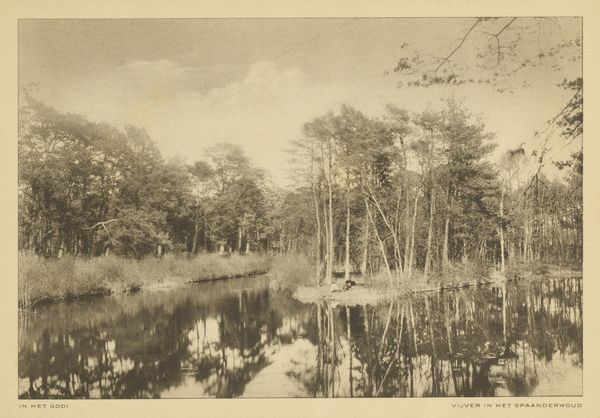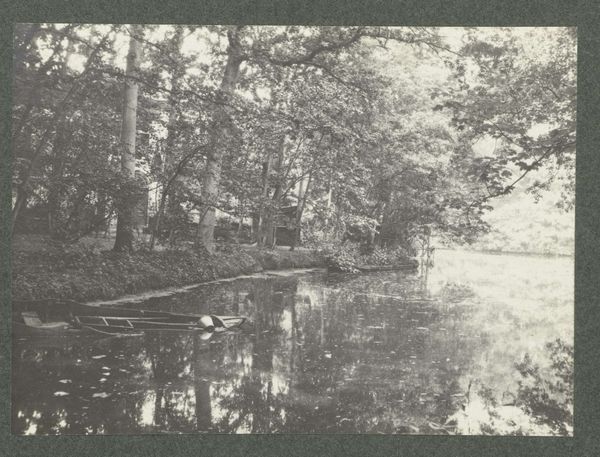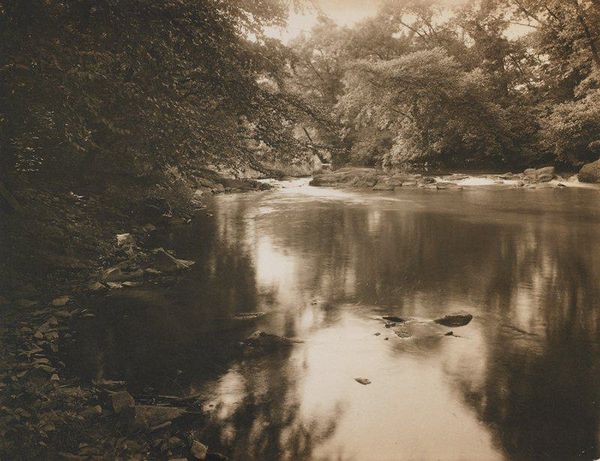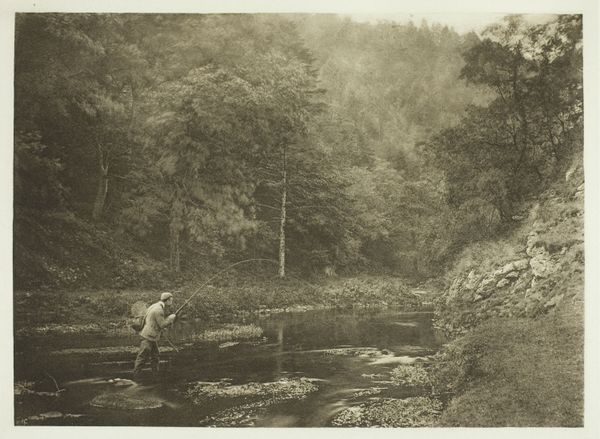
Dolph Kessler en vrienden zwemmen in een vijver of de rivier de Trent in Gainsborough c. 1903 - 1904
0:00
0:00
photography
#
portrait
#
pictorialism
#
landscape
#
photography
#
group-portraits
Dimensions: height 80 mm, width 110 mm, height 363 mm, width 268 mm
Copyright: Rijks Museum: Open Domain
Curator: This photograph, likely taken between 1903 and 1904, is titled "Dolph Kessler en vrienden zwemmen in een vijver of de rivier de Trent in Gainsborough", which translates to "Dolph Kessler and friends swimming in a pond or the river Trent at Gainsborough." It’s currently held at the Rijksmuseum. What strikes you first? Editor: A feeling of serene nostalgia. The tones are muted, sepia almost, which enhances that historical distance. The soft focus gives it a dreamlike quality, almost as though we’re observing a cherished memory fading at the edges. Curator: Indeed. Kessler's work often falls within the pictorialism movement, which championed photography as a fine art. These photographic circles emerged just as public debates raged about the effects of photography on individuality and the status of art itself. Editor: The river itself takes on a symbolic weight. Water, especially in a photograph like this, can mean cleansing, a return to origins. These men swimming become a unified whole, dissolving into the currents of time and nature, stripped of societal status or artificial identity. Curator: It's interesting you say that. In a way, the choice of subject reinforces a type of leisure which emerged only through complex social and technological histories, especially as photography allowed different segments of society to imagine such leisure in relation to themselves. Think of the burgeoning industry of postcards featuring the seaside in this same period. Editor: Right, the escapism is clear, but I feel drawn to the way the landscape mirrors the figures—the densely packed trees are as obscured as their identities almost. It all creates a strong sense of mystery. Curator: It’s true; pictorialism often favored atmospheric effect over sharp detail, and here the human subject seems embedded into an Arcadian scene. And Kessler, along with other practitioners of photography at the time, sought exhibition spaces in order to display these types of pictures. Editor: And now here we are, talking about the work today! The sense of human figures intertwined with landscape... it’s a timeless image that invites quiet reflection on both how much, and how little, has changed since it was created. Curator: An important reminder that art's public journey, the spaces it occupies and how we talk about them, continue to evolve and transform meaning over time.
Comments
No comments
Be the first to comment and join the conversation on the ultimate creative platform.

